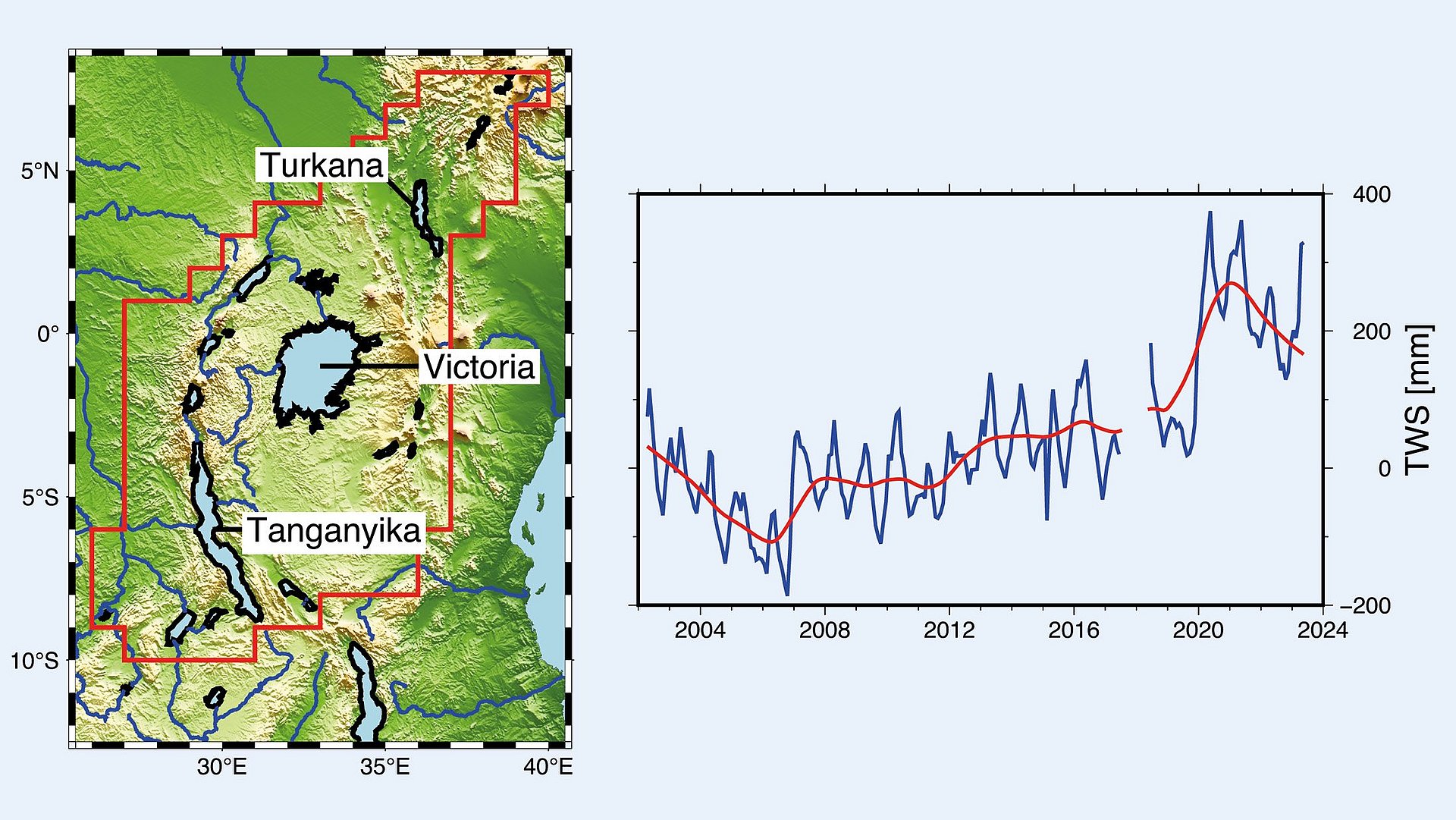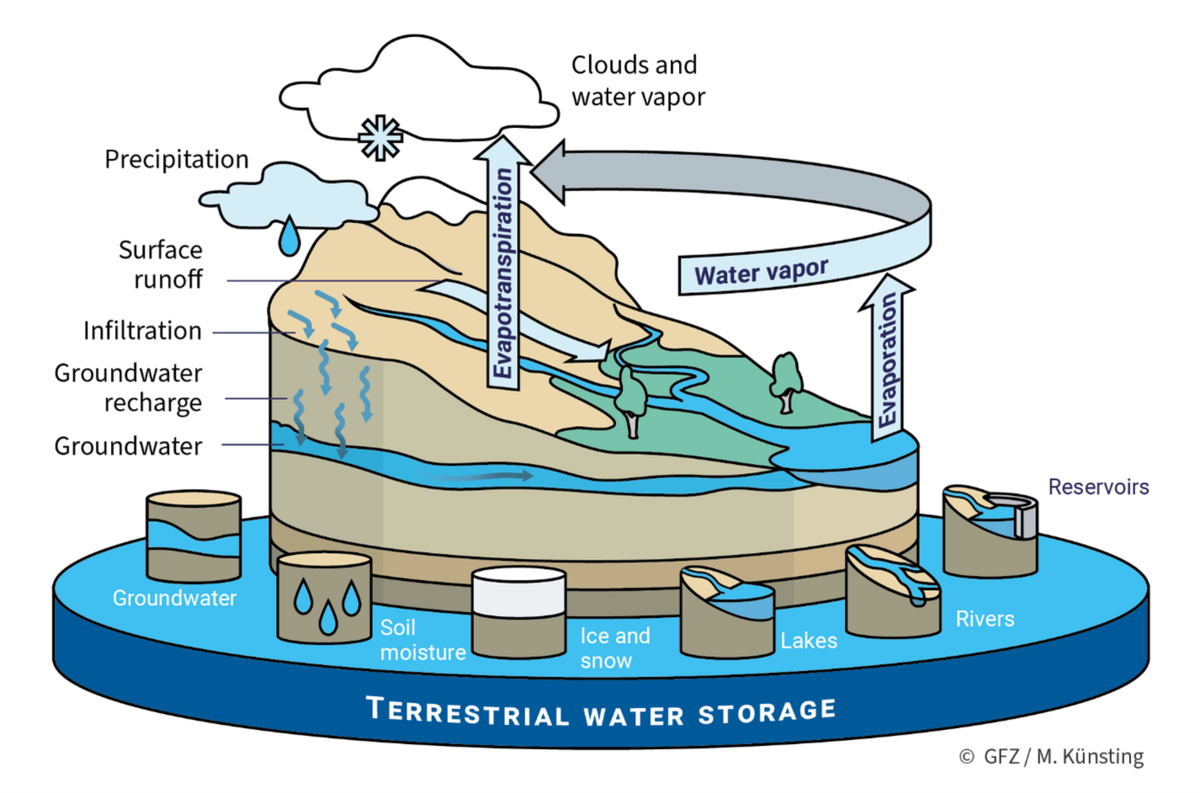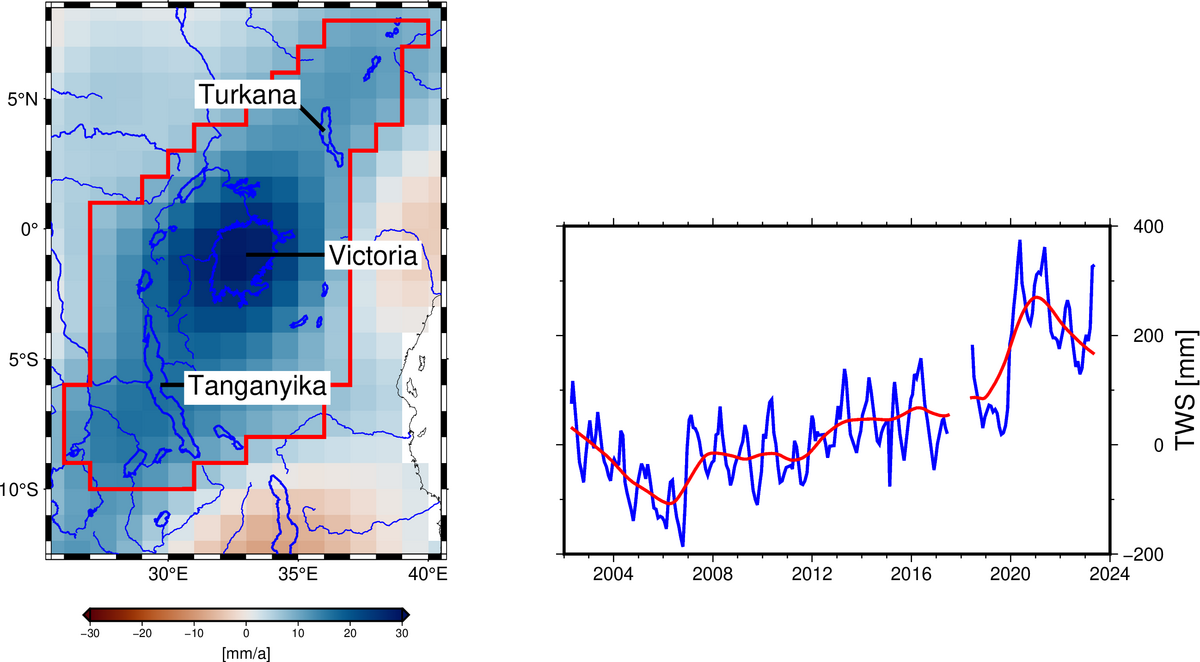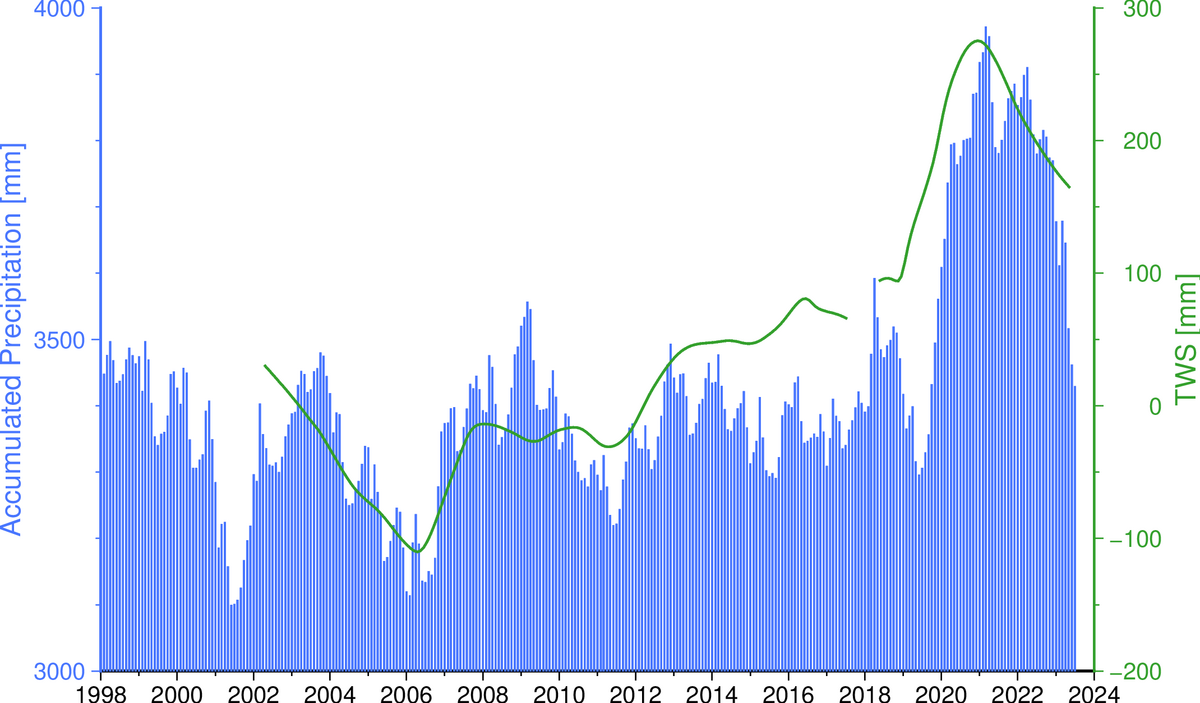For over 20 years, the GRACE and GRACE-FO satellite missions have observed changes in the water masses on the continents, the so-called terrestrial water storage (TWS). This data set is invaluable as it is the only global observation of all water storage compartments together, from surface water, soil moisture, snow and ice, down to the groundwater. The long time series allows us to see complex interannual changes beyond seasonal variations and linear trends. The northern part of the East African Rift around Lake Victoria is one region with such complex interannual variation. But how can we determine the source of the changes? Are they originating in variations of the lake levels or did the storage in the groundwater change over the period? Further, are the observed variations caused by natural processes or did local human interactions influence the water storage of the region? To disentangle the sources of these changes, we compare TWS with meteorological data and data of the water storage in the lakes, soil moisture, and groundwater. We found that only a combination of natural precipitation changes and man-made decisions on reservoir management can explain the long-term changes in TWS.
Dr. Eva Boergens, GFZ Helmholtz Centre for Geosciences
The ClimateIn contrast to weather, which refers to daily or very short-term events, climate refers to an average condition in the atmosphere over a longer period of 30 to 40 years. All processes such as average temperature, precipitation, wind direction, wind s... Experiment (GRACE)" class="glossary__keyword">Gravity Recovery and ClimateIn contrast to weather, which refers to daily or very short-term events, climate refers to an average condition in the atmosphere over a longer period of 30 to 40 years. All processes such as average temperature, precipitation, wind direction, wind s... Experiment (GRACE)German-American satellite missions to monitor temporal changes in mass distribution in the Earth system. Each mission consists of two identical satellites whose relative positions in space are continuously measured. The first GRACE mission was launch... mission and its successor GRACE-Follow-On (GRACE-FO) observe tiny spatial and temporal variations of the Earth’s gravity field. Over the continents, these changes are primarily caused by the redistribution of water masses, the terrestrial water storage (TWS). Water is stored in different water storage compartments, from surface water and soil moisture down to groundwater, but also in snow and ice (Fig. 1). GRACE and GRACE-FO can only observe the sum of all these water storage compartments together. Thus, we are unable to determine the water storage compartment which causes the change in an observed TWS signal. However, at least some compartments can be observed with other satellite data, such as altimetry for lakes and reservoirs.
Since GRACE was launched in 2002, we now have 22 years of TWS observations, which have helped us to investigate and understand more complex hydrological signals. The northern part of the East-African rift is one region with such a complex interannual signal. The region encompasses the lakes Victoria, Tanganyika, and Turkana, some of the largest lakes globally. Here, we observed both a drought (before 2006) and flooding (2019-2021), leading to an overall positive trend throughout the whole period (see Fig. 2). The region around Lake Victoria especially had a strong trend during this period.
At the same time, the lake shores are highly populated, and societies rely intensely on the water supply of the lakes. Thus, droughts and floods are likewise threats to the people, and an understanding of hydrology dynamics is needed. More so, the outflow of Lake Victoria is regulated by the Nalubaale Dam, but no further information about the dam discharge is publicly available.
We use complementary observations of precipitation and of soil moisture, lakes, and groundwater to disentangle the interannual variations of TWS in the region. Precipitation shows many short-term variations, while TWS changes only slowly. This is why we decided to use precipitation data summed up over the previous three years for each month to compare this accumulated precipitation with TWS (Fig. 3). Here we can see that both the drought before 2006 and the floodings after 2019 were caused by too less and too much rain. However, the lack of rain during the drought seems insufficient to explain the TWS deficit. Further, the interannual changes in TWS between 2006 and 2019 are not mirrored in the precipitation data set.
Thus, to further understand the long-term changes in TWS, we investigate the different water storage compartments that make up TWS. In the East African Rift, we can safely ignore snow and ice. Thus, we look into the surface water storage of the lakes, soil moisture, and groundwater (Fig. 4). Here, we consider the yearly changes in each storage, i.e. December minus January storage for each year. In the early years, the storage shortage seen in TWS mainly originated from the lakes in SWS, while the large water excess in 2019 and 2020 was similarly observed in the lakes and the groundwater.
From that, we can conclude that different hydrological processes influenced the water storage of the region before 2006 and since 2019. This leads us back to the fact that Lake Victoria is no longer a natural lake as it is regulated by the Nalubaale Dam. However, the water release at the dam should mimic a natural flow behaviour and thus not strongly influence the hydrology of the region. During the ongoing drought in the early 2000s, a second hydroelectric power dam downstream of the Nalubaale dam was built and inaugurated. Independent data showed that because of this second dam, more water was released at the Nalubaale Dam, leading to sinking water levels of Lake Victoria. This, in turn, unnaturally influenced the whole region's water storage. So overall, the long-term changes of TWS we observe in the northern part of the East African Rift are both caused by man-made decisions and natural rainfall variations.
Reference
- Boergens, E., Güntner, A., Sips, M., Schwatke, C., Dobslaw, H. (2024): Interannual variations of terrestrial water storage in the East African Rift region, Hydrol. Earth Syst. Sci., 28, 4733–4754
https://doi.org/10.5194/hess-28-4733-2024
Link tips
- Fact Sheet Terrestrial Water Storage (TWS)
- Focuspage on Terrestrial Water Storage
- Focuspage on Groundwater
- HELMHOLTZ Podcast Resonator with Eva Boergens




